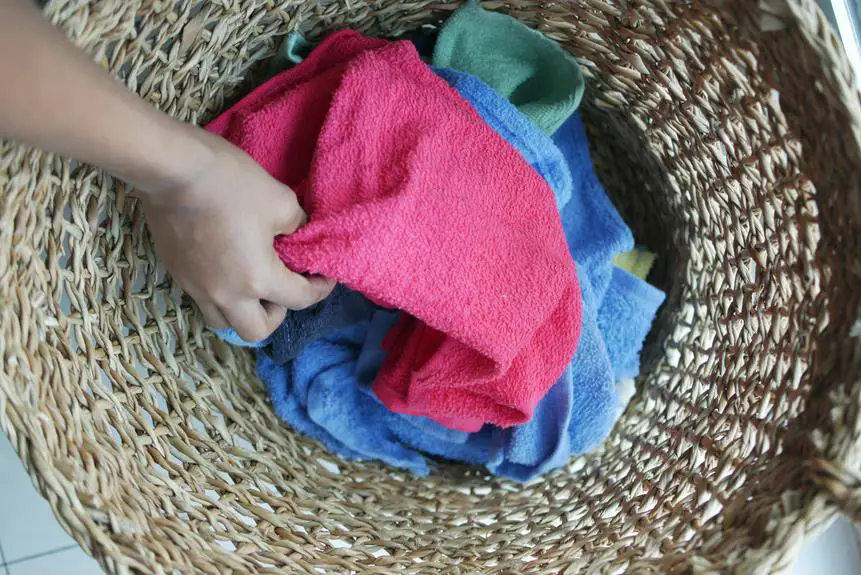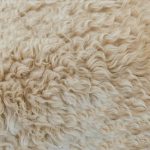You're probably wondering what the average weight of French terry fabric is, especially if you're working on a project that requires this versatile material. The truth is, the weight of French terry fabric can vary significantly depending on its intended use, desired comfort, and durability. While a general weight range can be identified, the specific weight you need will depend on several factors. But before we dive into the nitty-gritty of fabric weights, let's first explore what the average weight range of French terry fabric actually is – and why it's essential to get it right for your project's success.
Table of Contents
Factors Affecting Fabric Weight
When it comes to determining the weight of French terry fabric, you'll find that several factors can affect it, including the type of yarn used, the weaving or knitting method, and the fabric's thickness.
The type of yarn used plays a significant role in the weight of French terry fabric. Thicker yarns tend to produce heavier fabrics, while finer yarns result in lighter fabrics.
The weaving or knitting method also affects the weight, as it determines the fabric's density. A tighter weave or knit will generally produce a heavier fabric than a looser one.
You should also consider the fabric's thickness when evaluating its weight. French terry fabric with a plush pile will typically be heavier than one with a smooth surface. Additionally, any finishes or treatments applied to the fabric, such as dyeing or napping, can also impact its weight.
As you consider these factors, keep in mind that even small variations can result in significant differences in the weight of French terry fabric. By understanding these factors, you can make more informed decisions when selecting the right French terry fabric for your project.
Average Weight Range Explained
Typically, the average weight range of French terry fabric falls between 250-400 g/m², which is a general guideline you can use when selecting fabrics for your project.
This weight range is suitable for a wide range of applications, from casual wear to home textiles.
When choosing a French terry fabric, you'll want to consider the intended use and the desired level of comfort and durability.
Garment type: If you're making a loose-fitting sweater or sweatpants, a lighter weight French terry (250-300 g/m²) may be suitable. For a more structured garment, such as a hoodie or jacket, a heavier weight (350-400 g/m²) may be more appropriate.
Seasonality: If you're creating a garment for warmer weather, a lighter weight French terry will provide breathability and comfort. For colder weather, a heavier weight will provide more insulation.
Desired drape: If you want your garment to have a soft, relaxed drape, a lighter weight French terry may be the way to go. For a more structured look, a heavier weight will provide more stability.
Measuring Fabric Weight Accurately
You've considered the average weight range and factors that affect your choice of French terry fabric, but to ensure you're getting the right fabric for your project, it's time to measure its weight accurately.
Measuring fabric weight accurately is crucial to ensure that your project turns out as expected.
To measure fabric weight, you'll need a few simple tools: a ruler or measuring tape, a calculator, and a scale that can accurately measure small weights.
Cut a square piece of fabric that's at least 10 inches by 10 inches to get an accurate measurement. Weigh the fabric using your scale, making sure to zero out the weight of any packaging or other materials. Record the weight in ounces or grams. Measure the length and width of the fabric using your ruler or measuring tape. Calculate the fabric's weight per square yard by multiplying the weight by the number of square yards in the fabric sample.
Common Uses and Weight Variations
With various weight variations of French terry fabric available, it's essential to choose the right one for your project based on its intended use. You'll want to consider the fabric's weight, texture, and durability to ensure it meets your needs.
French terry fabric is a versatile material that can be used for a wide range of applications, from casual wear to home decor.
- Lightweight: 8-10 oz (225-280 gsm) – Ideal for baby clothes, loungewear, and summer garments that require a soft, breathable fabric.
- Mid-weight: 12-14 oz (340-390 gsm) – Suitable for hoodies, sweatpants, and other casual wear that needs a bit more structure and warmth.
- Heavyweight: 16-18 oz (450-510 gsm) – Perfect for blankets, towels, and home decor items that require a dense, absorbent fabric.
When selecting a French terry fabric, consider the project's requirements and choose a weight that balances comfort, durability, and functionality. By doing so, you'll ensure your finished product meets your expectations and provides the desired performance.
Choosing the Right Fabric Weight
When choosing the right fabric weight for your project, consider the level of comfort, durability, and functionality you need, as the wrong weight can compromise the overall performance of your finished product. You want to ensure that your fabric is suitable for its intended use, whether it's for clothing, home decor, or accessories.
To help you make an informed decision, consider the following factors:
| Fabric Weight | Recommended Use |
|---|---|
| Lightweight (6-8 oz) | Loungewear, baby clothes, and home decor items that require a soft, gentle texture |
| Medium-weight (9-11 oz) | Casual wear, such as t-shirts and sweatpants, that need a balance of comfort and durability |
| Heavyweight (12-14 oz) | Outerwear, activewear, and home decor items that require structure and stability |
| Extra-heavyweight (15 oz+) | High-traffic home decor items, such as upholstery fabric, that need maximum durability |
Frequently Asked Questions
Is French Terry Fabric Suitable for Warm Weather Clothing?
You might think French terry fabric is too thick for warm weather clothing, but its breathability and moisture-wicking properties actually make it a great choice for mild summer garments, such as casual dresses or tops.
Can I Use French Terry for Upholstery Projects?
You can use French terry for upholstery projects, but it might not be the best choice due to its stretchy and soft nature. It's better suited for clothing, but if you're looking for a unique texture, you'll need to stabilize it.
Does Fabric Weight Affect Shrinkage Rate?
You're wondering if fabric weight affects shrinkage rate. Generally, denser fabrics with higher thread counts tend to shrink less than lightweight ones. However, factors like fiber content, weave, and finishing treatments also influence shrinkage, so it's not just about weight.
Is French Terry Fabric Prone to Pilling?
You'll find that French terry fabric can be prone to pilling, especially if it's made from a lower-quality cotton or blended with synthetic fibers. However, high-quality French terry fabric tends to be less prone to pilling.
Can I Mix French Terry With Other Fabric Types?
You can mix French Terry with other fabrics, but consider the texture, weight, and fiber content to ensure a cohesive look. Blending with cotton, polyester, or spandex can create interesting contrasts and enhance performance.
- Woven vs. Nonwoven Bandages: A Medical Perspective - July 12, 2025
- How to Identify High-Quality Nonwoven Interfacing - July 12, 2025
- The Use of Nonwovens in Construction and Civil Engineering - July 12, 2025







